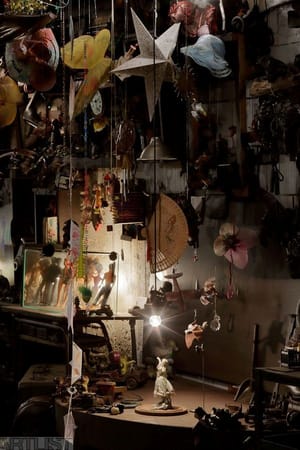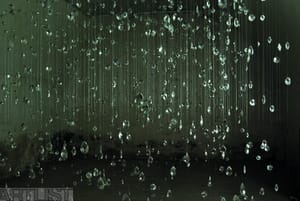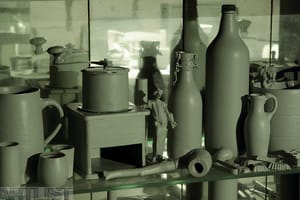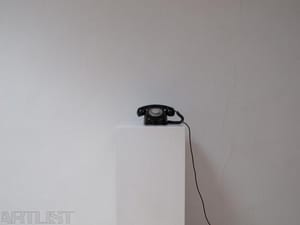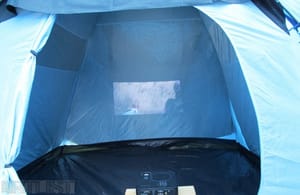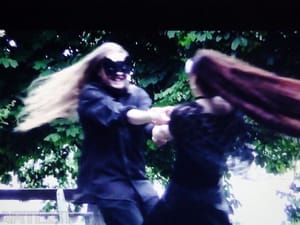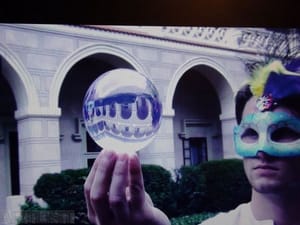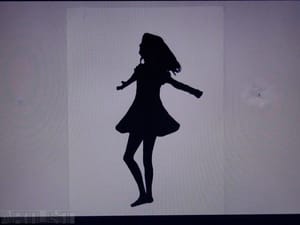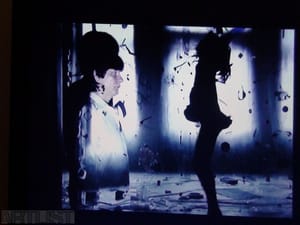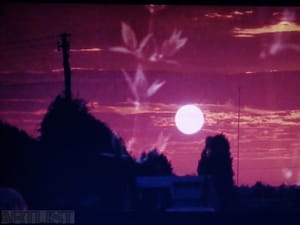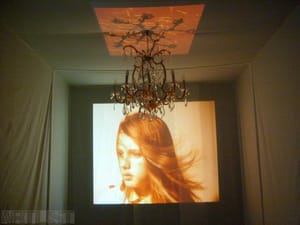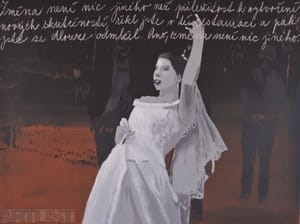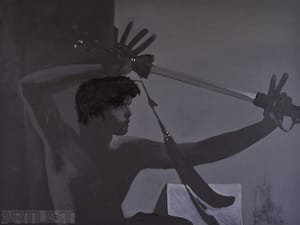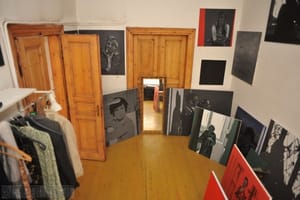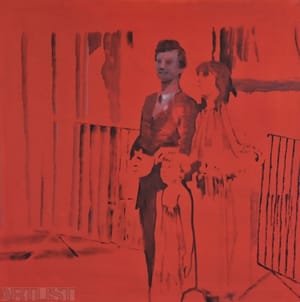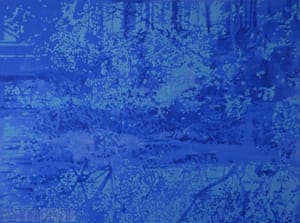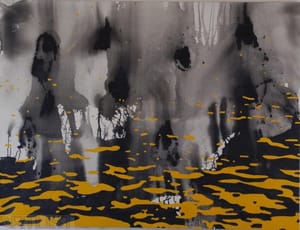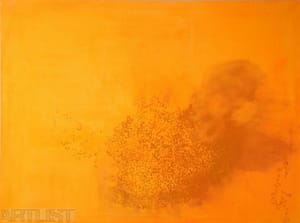- First Name
- Kamila
- Surname
- Ženatá
- Born
- 1953
- Birth place
- Havlíčkův Brod
- Place of work
- Prague
- Website
- www.kamilazenata.cz
- CSU Library
- ↳ Find in the catalogue
About artist
While the general public perceives Zoubek as a one position sculptor – creating rather impassioned sculptures evoking ancient theatre, which, following 1989 sometimes slipped all the way to the decorative style – if we take a closer look, we will see a sculptor who has had a very interesting and complicated development. It reflects the many problems that Czech art was faced with – primarily the loss of continuity after WWII, the difficulty in regaining it on the break of the 1950s and 1960s, and at the end of this decade also a fleeting contact with international sculpture.
Olbram Zoubek belongs to the strong generation that entered the scene after WWII. If Jindřich Chalupecký once remarked that in the generation of the 1940s, Ladislav Zívr was the only sculptor, then Zoubek’s generation was the last one in Czech art where sculpture dominated. In the beginning (until the beginning of 1960s), this generation could not deal with the existing issues of contemporary sculpture because it did not know it and it was preoccupied with other problems in the local conditions. There was nothing else to do than to follow up on the classics of Czech and international modernism – in Zoubek’s case these included Zadkine, Lipchits or Wotruba, as well as Miró or Léger. Sometime around 1965, sculpting symposia became an important source of information for local sculptors, and our environment was actually very close to them as they originated “around the corner” in Austria. Today we know that symposia were a phenomenon that contained many conservative or even retrogressive elements. This is actually valid also for the delayed touch of abstraction (at that time current in the Czech environment), which is linked to this group and played a certain role primarily in Zoubek’s work. His sculptures from Sankt Margarethen, Vyšné Ružbachy or Oggelshausen, free of any shape, encouraged by the founder of the symposia Karl Prantl, still have a figurative core. Let’s pause to recall that at this time he experienced his actually greatest breakthrough within the international context when in 1969 his sculpture from Sankt Margarethen was featured on the front page of a retrospective catalogue for the 10th anniversary of this historically first symposium.
From an art-historical perspective Zoubek was unlucky in a way for being born in such a strong generation, as a result of which he stood in the shadows of his peers whether it was Palcr, Chlupáč, Sekal, Kolíbal or his wife Eva Kmentová (naming just sculptors). But his sculptures-symbols from the break of 1950s and 1960s, his very strange sculpture group of a pair of engineers Malátek and Loos with the gestures of suppliants (1964), or his already mentioned sculptures bordering abstract stelas, co-created that overflowing creative atmosphere in the pressure cooker of the Czech basin of the 1960s, which was a mixture and cooperation of several generations and opinion streams. And it was certainly no coincidence that he belonged to the wider circle around Jindřich Chalupecký and that he was represented in 1967 at the exhibition Pět sochařů (Five Sculptors) in the Špálova Gallery. It may come as a surprise today that we can also find him among the participants of underground events such as Setkání na tenisových dvorcích v Praze (Meeting at the Tennis Courts in Prague) (1982), but Zoubek, although he was a classical sculptor, belonged to the core of the back then cultural opposition. This was confirmed also by the army of his statues at the exhibition Forum 88 in Holešovická tržnice – the first representative presentation of the Czech unofficial scene. In the spirit of this, he became the president of Nová skupina (New Group) in 1990 which was initiated by Chalupecký. This group, however, did not have a chance to become a fundamental platform because the circumstances had radically changed and Chalupecký’s principles, valid during the time when there was a lack of freedom, were suddenly no longer attractive for artists. Intergenerational solidarity lost its meaning in the new world, and all of a sudden the most important thing was individual performance.
In the renewed freedom Zoubek broke through like no one else and he was struck by the unhappy destiny of being a living classical artist, which does not necessarily mean a benefit for the artist and his work. He was, for example, quite harmed by the unlucky monograph from 1996 published as an honour to him by the Masaryk University – this concise art-historical and commemorative material turned out to be embarrassing from the typographical, as well as printing aspect. Today his work may appear to be too literary, impassioned and – as is the case of his memorial at Újezd – almost stage managed. In a way it is also encumbered by the period prior to 1989, because today we have the tendency to perceive it exactly in its context – as a private revolt against its shallowness, like a morality... And although I’m afraid that the new generations of young art historians will not have such sympathies for Zoubek’s work like those who had the chance to be influenced by its dignified and pleasant appearance (for that matter, something similar happened to another icon of Czech art, Mikuláš Medek), his work has unquestionable qualities that cannot be disregarded together with that superficial public interest that accompanies him today.
- Author of the annotation
- Silvie Šeborová
- Published
- 2011
CV
Studies:
1973-1979 Academy of Fine Arts, Ladislav Čepelák
1964-1967 Public art school, Čáslav (Kutná Hora)
Stipends:
1995 Tiszaújvaros art colony, Hungary
2005 residence, Casa Zina Lia, Elba, Italy
2009 residence, Cill Riallaig, Kerry, Ireland
- Member of art groups included in ARTLIST.
Exhibitions
- Solo exhibitions
-
2019
Beverley Art Gallery, /UK/ Book of Changes
2018
Galerijní laboratoř a Galerie (A)void, Praha /CZ/ Podivuhodná květina
Hosek Contemporary, Berlin /D/ Book of Changes
MUD* Benešov /CZ/ U stolu
2017
DOX – Centrum současného umění, Praha /CZ/ Horizont událostí (finále)
2016
Venuše ve Švehlovce, Praha /CZ/ Horizont událostí – část II. / Event Horizon – part II.
Galerie Villa Pellé, Praha /CZ/ Neviditelnost/Invisibility
2015
Karlin Studios, Praha /CZ/, Horizont událostí – část I /Event Horizon – part I
2013
Centrum pro současné umění DOX, Praha
Malá pevnost, Terezín
Ženský dvůr / The Women’s Yard (katalog)
2011Centrum pro aktuální umění, Galerie Prádelna, Praha
Roll Over All / Roll All Over, Lilith (katalog)
Komunikační prostor Školská 28, Praha
Pick Up Your Phone (katalog)
2009
Galerie 5. patro, Praha, 2. patro – opuštěný byt (katalog)
2007
Galerie Mánes, Praha, Nauč se stát na jedné noze (katalog)
České centrum, Tokio, Japonsko, Twilights/ Twilights
2006
České centrum, Stockholm, Švédsko, Jungle
Foyer Dreikönigskirche, Dresden, SRN, Im Innerem
2005
Galerie SM, Uherské Hradiště
Centrum de Boskant, Den Haag, Holandsko
2004
Galerie Václava Špály, Praha, Uvnitř (katalog)
2003
Galerie zur grünen Tür, Uznach, Švýcarsko, Zahlédnutá krajina
2002
Galerie Vltavín, Praha, Barva
2001
Galerie zur grünen Tür, Uznach, Švýcarsko, Liebe ist grün
1998
Alšova jihočeská galerie, Nebe ze mě (katalog)
Muzeum moderního umění, Hradec Králové (katalog)
1997
Galerie Vltavín, Praha, Loučení s kouzelníkem (katalog)
Galerie Fronta, Praha, Was macht meine Farbenpalette? (katalog)
- Group exhibitions not included in ARTLIST.
-
2013
Logografowie/ Logographers – Opole, Galerie současného umění – Polsko
Výtvarné umění - výstava, Galerie Nová síň, Praha
2012
Kamila Ženatá, Zdeněk Sejček: Obrazy, Dusíkovo divadlo Čáslav, Čáslav
2011-2012
Umělci Archivu, DOX, Malá věž, Praha
2011
Dům umění Brno /CZ/ – Videokemp
2009
DOX Centre for Contemporary Art – Prague /CZ/ – 14S
Kresby členů SČUG Hollar, Galerie Hollar, Praha
čtrnáct S / fourteen S, DOX, Centrum současného umění / Centre for Contemporary Art, Praha 7
2008
Moderní a poválečné umění, současné umění, fotografie, Galerie 5. patro, Praha
2007
Divadlo Svět - Svět neklidu, Galerie Vivo, Praha
2006
Vltavotýnské výtvarné dvorky 2006, Městská galerie Art Club, Týn nad Vltavou
Grafické techniky 3, Rytina, suchá jehla, mezzotinta, Městský palác Templ (Galerie Templ), Mladá Boleslav
2005
Grafické techniky 3, Rytina, suchá jehla, mezzotinta, Galerie Hollar, Praha
Kamila Ženatá und Roland Rüegg, Galerie zut grünen Tür, Uznach
Vltavotýnské výtvarné dvorky 2005, Městská galerie Art Club, Týn nad Vltavou
2004
Grafické techniky 2, Lept, akvatinta, kombinovaná technika, Galerie Hollar, Praha
Vltavotýnské výtvarné dvorky 2004, Městská galerie Art Club, Týn nad Vltavou
2003
Ejhle figura, Galerie Hollar, Praha
2002
Zápas s andělem, Hotel Gustav Mahler, Jihlava
2001
Žrouti, jedlíci, labužníci, Novoměstská radnice, Praha
Žrouti, jedlíci, labužníci, Dům umění, Znojmo
2000
Praha světácká, Galerie U prstenu, Praha
1997
Tschechische künstler: Maler / Grafiker / Bildhauer, Länderbereich Zentraleuropa, Ludwigshafen am Rhein
Práce na papíře / Works on Paper, Mánes, Praha
1996
Bibliofilie z dílen současných českých grafiků členů Sdružení českých umělců grafiků Hollar, Galerie Hollar, Praha
1995
Kresba ´95, Galerie Hollar, Praha
Inter-Kontakt-Grafik ´95 1. mezinárodní trienále grafiky Praha, Staroměstská radnice, Praha
Vltavotýnské dvorky: 22 českých grafiků, ART CLUB - CAFÉ BAR, Týn nad Vltavou
1993
Inter - Kontakt - Grafik - Praha ´93, Mánes, Praha
1990
Ladislav Čepelák a jeho škola, Mánes, Praha
1989
Mladí Janu Bauchovi, Galerie Václava Špály, Praha
1988
Současné české exlibris, Galerie d, Praha
1987
Československý exlibris 1987, Stredoslovenská galéria, Banská Bystrica
1986
Nová tvorba ´85. Z výsledků tvůrčích pobytů mladých výtvarných umělců, Galerie Vincence Kramáře, Praha
1981
Nová tvorba mladých výtvarných umělců, Mánes, Praha
1979
Výtvarní umělci dětem, Praha, Praha
- Collections
-
National Gallery of Art / Washington, DC
Národní galerie v Praze / Praha
Alšova jihočeská galerie / Hluboká nad Vltavou
Východočeská galerie v Pardubicích / Pardubice
Ministerstvo zahraničních věcí ČR
Ministerstvo kultury ČR
Galerie moderního umění v Hradci Králové / Hradec Králové
Monography
- Monography
Haškovcová, Marie: Zkamenělé prádlo, Ateliér, 14-15/2013, s. 2
Serranová, Mariana: Ženský dvůr, Art & Antiques, 7-8/2013, s. 66 -7
Vitvar, Jan H.: Život v kruhu, Respekt, 10/2011, s. 64-65
Slavická, Milena: 2. Patro, Ateliér, 19.11.2009, s.1
Šeborová, Silvie: Terapie výstavou, Art & Antiques, 12/2009, s.72-73
Šeborová, Silvie: Čtrnáct S, Flash Art CZ/SK, červen-září/2009, s. 52
Vitvar, Jan H.: Paměť jednoho bytu, Respekt, 48/2009, s. 54
- Articles
Slavická, Milena: 2. patro, Ateliér, 19. 11. 2009, s. 1
Šeborová, Silvie: Terapie výstavou, Art+Antiques, 12/2009, s. 72-73
Šeborová, Silvie: Čtrnáct es, Flash Art CZ/SK, červen-září/2009, s. 52
Vitvar, Jan H.: Paměť jednoho bytu, Respekt, 48/2009, s. 54

